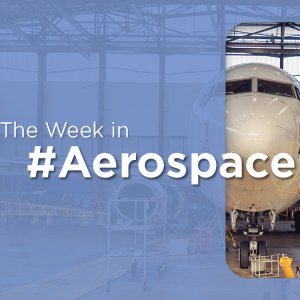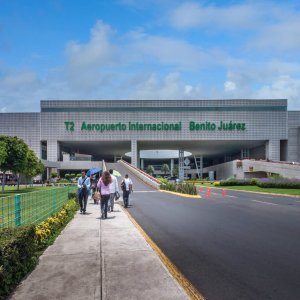Mexico in the New Space

STORY INLINE POST
Back in 2014, me and Guillermo Muñoz from Bombardier, started a collaboration with the Universidad Popular Autónoma del Estado de Puebla (UPAEP) in the creation of an Aerospace engineering new program. One of the 3 areas of specialization is focused on the design, construction and operation of satellites. The program was officially launched in October of 2015 in a ceremony where authorities of the University like Emilio Baños (Rector), Eugenio Urrutia (Vicepresident), Hugo Ferrer (Dean of engineering), as well as Andrés Martinez (Program Executive, Advanced Exploration Systems at NASA Headquarters), José Hernández (CEO at Tierra Luna Engineering and former astronaut) and myself, joined our strengths in order to start what at the very beginning was just a dream. Many important milestones have been achieved, but without a doubt the guidance and sponsorship of José and Andres plus an important group of advisors, the impressive commitment of UPAEP and the talent of Mexican students and professors have placed Mexico in the center stage of the New Space era with the launch of the AzTech Sat 1.
The AzTech Sat 1, is a nanosatellite of the class CubeSat designed and manufactured by UPAEP, launched in December of 2019 on the Falcon 9 of SpaceX and delivered to the International Space Station (ISS) from where it was launched to orbit successfully in February of 2020. A cube of 10 centimeters per side contains vital equipment to demonstrate inter-satellite communication in low-Earth orbit connecting to the Globalstar Constellation. This capability could remove the need for ground stations, reducing the cost and increasing the number of data downloads for satellite applications. This milestone represents not only the first Mexican satellite launched from the ISS, but the successful collaboration between the Secretariat of communications and transport (SCT), the Mexican Space agency (AEM), NASA and the Mexican university.
The New Space term describes an emerging global industry with companies independent from governments and main contractors developing faster, cheaper and more efficiently space technologies and missions with the objective to increase human presence in space to commercially exploit it. In other words, it represents the democratization of space. Inter-satellite communication is critical to future human space exploration, but it is only a portion of what is a blooming industry already with big investors in shuttle launches, nanosatellites, tracking of earth natural conditions, imaging, space tourism, space real estate, space construction, telecommunications, energy generation and consumption, funeral services in space, space mining, science research and development in space, and even art and space culture. I am just listing the known ones, but it really will increase as far as imagination can bring new innovative ideas to space. The AzTech Sat 1 is very important as it represents the entrance and presence of Mexico in the New Space.
At FEMIA we have recently created a Space Commission because we understand not only the relevance of this emerging industry, but the potential it represents in opportunities to have Mexican companies in fields like design, manufacturing, project management and operations control. By the way, there are already Mexican companies well positioned and with a strong network within the new sector. The aviation industry was well developed already 15 years ago when Mexico started to be part of it and the results have been great. We are as a country already an important player with a strong presence in the global supply chain and lots of successful examples of what Mexican creativity and passion can achieve. We have been able to jump on an industry that was flying at full speed already. In the case of New Space we have a big chance to be pioneers of a new emerging industry with the credentials of our success in aviation. It would represent being already in the industry while it is taking off. We have the credibility, we have the talent and in this particular case we have the alignment and willingness of important entities such as the AES, SCT, NASA and FEMIA with all the companies it represents.
One of the first objectives of this new commission is to support and provide sponsorship for the launch of an AzTech Sat 2 which is in a way, the ticket to be integrated in biggest projects of the NASA for the future such as Artemis which aims to create sustainable colonies of humans living on the moon starting with the moon’s south pole exploration by 2024 and eventually in Mars by 2033. NASA is the main lead of the project but associated with private partners with specific technologies in propulsion, all-terrain vehicles, construction, aircraft design, to name a few, and space agencies of other regions such as Europe, Japan, Canada and Australia. It is a huge ambitious multinational project and we are very excited with just the idea of being part of it.
The New Space industry is going to be developed and grow exponentially as we are seeing just the beginning of its capabilities which few years ago were a wild dream of some “very crazy” people. We called them crazy when companies like SpaceX or Virgin Galactic, Elysium space, or Bigelow Aerospace for example, presented their business models and objectives, but truth is that step by step, milestone by milestone they are showing that craziness with passion, commitment and sharp focus on objectives is a great formula to conquer the space. At this moment the motto “sky is the limit” is being replaced by “space is the limit” but it is so openly broad that we might as well say there is no limit for curiosity, innovation and talent, three factors that are embedded in the Mexican DNA. The Aztech Sat 1 working in orbit is much more than great news, it represents an historical milestone for our country and its aerospace industry. It is our responsibility as a Mexican industry to work really hard, give our best, motivate talent, and align academic institutions, business associations, federal government, entrepreneurs and companies to seize the opportunity and jump in the spaceship about to depart to become a key player in one of the industries of the future. Please call me crazy, but I am in!
























